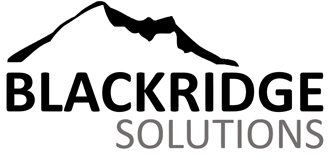transportation. While it offers flexibility and independence, it also puts workers at risk of
accidents, injuries, and violence. Employers are increasingly turning to lone worker safety
devices to mitigate these risks.
In this article, we will discuss the essential features to look for in such devices.
1. GPS Tracking
Gadgets like the G7 BRIDGE and G7x allow employers to monitor the location of their lone
workers in real-time. It uses satellite technology to pinpoint the workers location and transmit it
to a central server. This data is then used to map the workers movements and alert the
employer if they deviate from their expected route or location
.
This has several benefits for lone workers. Firstly, it provides an added layer of security by
allowing employers to locate workers quickly in case of an emergency. Secondly, it helps
employers monitor worker productivity and ensure they adhere to their schedules. Finally, it can
assist in locating a worker who may be lost or injured in a remote location.
Real-life examples of GPS tracking in action include a construction worker who was trapped
under rubble and was found quickly due to the GPS signal in his safety device. Additionally, a
lone worker who was lost in a remote forest was located within hours using GPS tracking.
2. Panic Button
This is a feature that allows workers to call for help in case of an emergency. It is typically a
button that can be easily accessed on the device, and when pressed, it sends an alert to a
monitoring center or designated emergency contact.
The importance of the panic button cannot be overstated as it provides an immediate and direct
line of communication between the worker and their employer. In case of an emergency, the
worker can press the button and receive assistance quickly, potentially saving their life.
3. Two-Way Communication
This is a feature that enables workers to communicate with their employer or a monitoring
center. It typically involves a speaker and microphone on the device, allowing for clear and
concise communication.
The benefits of two-way communication for lone workers are numerous. Firstly, it allows them to
receive instructions or assistance from their employer in real time. Secondly, it provides a
means for them to report any incidents or hazards they encounter while working. Finally, it can
provide a sense of reassurance and safety, knowing that they can communicate with someone if
needed.
Real-life examples of two-way communication in action include a healthcare worker who was
able to receive real-time instructions from a doctor while attending to a patient in a remote
location. Additionally, a transportation worker who encountered an aggressive passenger was
able to report the incident to their employer using their safety device.
4. Fall Detection
Devices such as the G7c uses sensors to detect when a worker has fallen or is in a prone
position. When activated, it sends an alert to the monitoring center or designated emergency
contact.
The importance of fall detection for lone workers cannot be overstated, as falls are one of the
leading causes of injuries and fatalities in the workplace. By detecting a fall, the monitoring
center can quickly respond and provide assistance, potentially saving the workers life.
Real-life examples of fall detection in action include a construction worker who fell from a height
and was detected immediately by their safety device. Additionally, a healthcare worker who
suffered a seizure and fell was quickly located and received medical attention due to their fall
detection device.
Conclusion
Indeed, lone worker safety devices are essential for protecting the health and safety of workers
who work alone or in remote locations. The essential features discussed in this article provide a
comprehensive overview of what to look for when selecting a safety device. By ensuring that
these features are present, employers can provide their lone workers with the tools they need to
stay safe and productive on the job
.
If you are looking for the best lone worker devices in the market today, look no further than our
high-quality selections here at BLACKRIDGE Solutions. We are the leading authority on lone
worker safety and gas detection solutions, and we only work with the best because only the best
will do. Feel free to click on our categories above for more of our safety devices and their
features. ([email protected])




 RSS Feed
RSS Feed